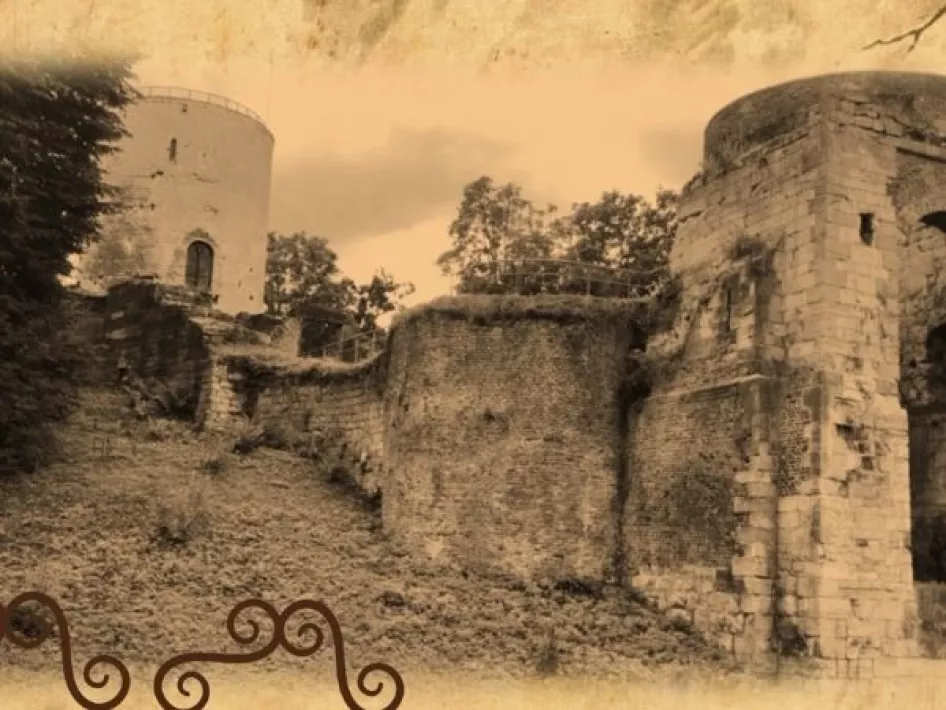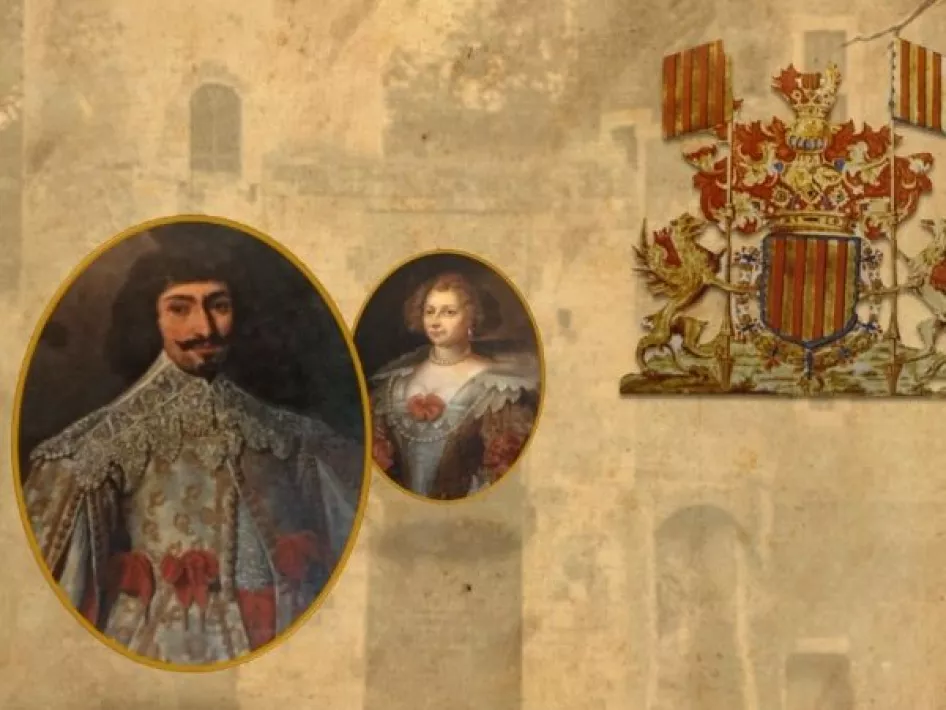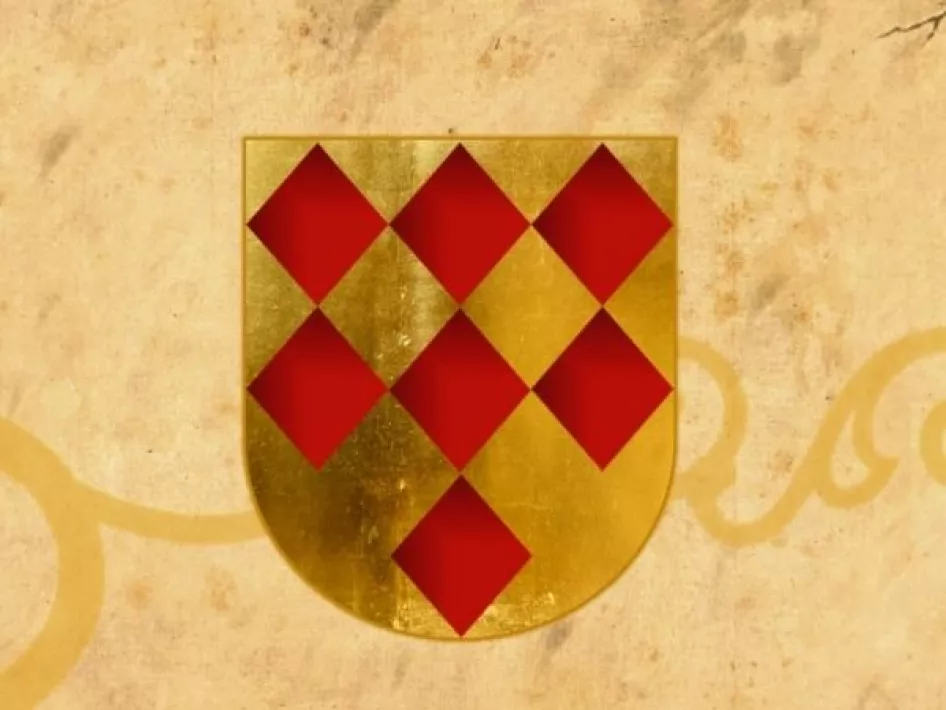"I can't believe I get to live here", is what the inhabitants of the apartment building right next to the ruins of castle Stein must think every day. And rightfully so, because the castle itself used to be inhabited by a series of aristocrats. We'll list them for you…
Herman van Elsloo is the progenitor of the Stein dynasty. He acquired the Stein estate in the early 13th century. Herman was a crusader from 1218 to 1220.
Herman's son Arnold was the first to call himself Lord of Stein. His seal from 1231 bears the inscription 'Sigilum Arnoldi de Steine'. It's presumed that the keep was built in this period, in the early 13th century. It's a defensive tower with a height of 21 metres. Sixteen metres protrude from the motte and the walls are 3¼ metres thick. Scientists from Leiden presume the keep was probably built in the 11th century. Multiple Arnolds of Stein followed. In 1288, one Arnold of Stein fought in the famous Battle of Woeringen under the count of Loon. He was knighted and his courage and achievements are mentioned in the Poem by Jan van Heelu. It's presumed that this Arnold of Stein commissioned the initial medieval castle. The crest of the first lords of Stein appeared: seven red diamonds in a field of gold. This image is still part of the current municipal crest of Stein. In the mid-14th century, the estate of Stein was transferred through the female line to the Van Merwede family and subsequently to Van Brederode, Van Heinsberg and Van Nassau-Dillenburg. In 1465, Maria van Loon, countess of Heinsberg and lady of Stein and her husband Jan van Nassau-Dillenburg decided to sell the estate of Stein to the nobleman Herman van Bronckhorst-Batenburg from Gelderland. This Herman was the youngest son of the very wealthy couple Dirk van Bronckhorst-Batenburg and Catharina van Gronsveld. He died in 1520 and was buried in the crypt of the St. Martinus church in Stein. The castle was remodelled and expanded considerably under Herman van Bronckhorst-Batenburg. The 13th-century citadel was fitted with a barbican: a fortified outer bailey with a castle gate and two defensive towers. Grandson Herman van Bronckhorst-Batenburg regained the family estate of Batenburg near Nijmegen in the early 16th century. He married Petronella van Praet. His children were heavily involved in the Uprising against the Spanish domination under king Philip II, which marked the beginning of the Eighty Years' War. The sons sided with William of Orange and they followed the new religion. In 1567, the youngest sons Gijsbert and Diederik were captured. On the first of June 1568, they were decapitated in Brussels by order of duke Alva. Willem, the eldest son and the lord of Stein, was killed in battle in 1573 near Haarlem. The second son Karel, lord of Biecht (Obbicht), who helped William of Orange and his army during the famous crossing of the river Maas in 1568, was shot and killed in Cologne in 1580. Karel's son Maximiliaan van Bronckhorst-Batenburg became lord of Stein and Batenburg. By his marriage to Alverta van Vlodrop, he also became lord of Frechen, a town in Germany famous for its medieval stoneware. He commissioned a jug bearing the crest of William of Orange and the inscription 'WILLHELMVS*VAN*ASHAWEN*EIN*PRENSS*EDDELLEM*STAM*IN*GODES*NAEM'. Anna Maria Sidonia van Bronckhorst-Batenburg, Maximiliaan's eldest daughter, married Florens de Merode in 1624. Their son Maximiliaan married the daughter of his brother Ferdinand. This is a typical example of a strategic marriage, arranged solely for the purpose of retaining property. Jean Philippe Eugene de Merode was born from this marriage. The castle changed considerably under the Merodes. Around 1740, the estate of Stein was acquired by the De Kinsky family. Tensions with the people of Stein kept mounting, until things escalated in 1777 and the lords of Stein were driven out of their castle. At this time, the castle started to go to ruin. At the end of the 18th century the family were hoping to move back into the castle, but under the reign of the new European ruler Napoleon, the influence of the nobility had declined considerably. In 1820, castle Stein was acquired by the DeJaer-Grisard family from Liège. The widow Grisard commissioned a new castle at the Nederhof around 1830. The new coach house was built a few years later by the Wauters family. The ancient citadel had become a ruin and was incorporated into the romantic castle park in English landscape style. Groups of trees, different heights, surprise elements, a swan island, the keep as a belvedere offering vistas of Hasselt and Maastricht: these are all part of a romantic castle park.
1920 marked the beginning of another new period. The Missionaries of the Sacred Heart had bought the complex and converted it into a mission house. It became the home of the school of theology. Until 1966, over 500 priests were ordained here. About 350 of them went to missionary regions. After the seminary ceased to exist, the mission house was used as a monastery for the elderly. It also housed sisters of the congregation. The last religious left in 1996 and the mission house was converted into an apartment complex. The ruins and the castle park were handed over to the municipality of Stein and they sold it to the foundation Het Limburgs Landschap for a symbolic sum in 2014. Volunteers of the Erfgoed Stein foundation give tours at the castle ruin upon request.
Tourist information
Castle ruin Stein
Ondergenhousweg 14 - 6171 GW Stein
Visiting hours
Visits for groups larger than 10 people on reservation.
Admission € 4.50 for adults
Free for children under age 13
Register for a visit to the Castle ruin or for a group visit to the museum: info@stichtingerfgoedstein.nl
Download the app
PLEASE NOTE:
The archaeological site is located in the Patersbos near Stein Castle. You can reach the spear location in 2 ways:
1. Via the entrance at the intersection of Scharbergweg with Ondergenhousweg. Follow the sign castle / ruin. You will arrive at a path that starts with a wooden barrier. This path bends to the left. If you follow this path you will come to the archaeological site.
2. Via Brouwerij de Fontein on Ondergenhousweg 15. Follow the Steenwegstraat towards Nederhof. Here you will find a parking lot and at this parking lot the path that leads you to the Archeo location also starts.
TIP: Also visit the archaeological site '' the Neolithic burial vault '' in Stein
More information about this crypt



Archaeological site Stein - Castle of Stein
Experience the archaeological story from the Castle of Stein. Download the app and get face-to-face on site with our archaeologist. He tells you the history and the importance of the Castle of Stein through most modern virtual technology. This makes you feel as if you transform into the past.
When
Always open.
Contact and location
Archeologische vindplaats Stein - Kasteel Stein
Kapelbergweg 23
6171 GZ
STEIN LB
archeoroutelimburg